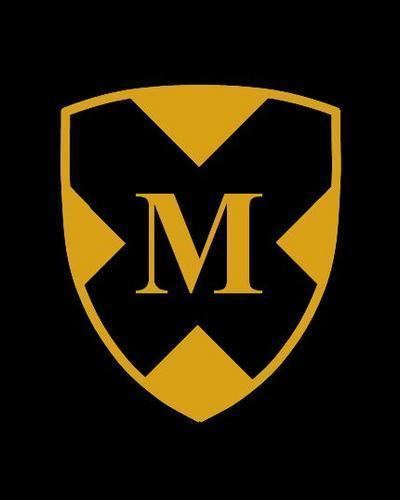Campus quad South Colors Black and Gold Rector Zachary Imfeld Founded 1925 | Established 1925 Gender Male Undergraduates 200 Mascot The Manor Headquarters Indiana, United States | |
 | ||
Motto Bonum Jucundumque Habitare Fratres Similar St Edward's, Sorin Hall, Lewis Hall, Walsh Hall, Badin Hall | ||
Morrissey Hall, also known as Morrissey Manor, is one of the 29 Residence Halls on the campus of the University of Notre Dame and one of the 15 male dorms. Built in 1925, its architects were Vincent Fagan and Francis Kervick. Along with other buildings on Notre Dame's campus, it is on the National Register of Historic Places.
Contents
- Map of Morrissey Hall Notre Dame IN 46556 USA
- History
- Insignia and traditions
- Sports and Awards
- Notable residents
- References
Map of Morrissey Hall, Notre Dame, IN 46556, USA
History
The construction of Morrissey and Lyons Halls dorms was a response to the high number of Notre Dame’s collegiate students living off campus and the rapid increase in student population after World War I. Howard Hall was completed in 1925. It was to be the first of three new freshman dorms; Morrissey and Lyons Halls were to be the next two. The building of both dorms was assigned to the architecture firm of Kervick and Fagan. Francis W. Kervick (1883-1962) and Vincent F. Fagan (1898-1951) were also professors at the Notre Dame department of architecture. They designed many of the school’s new buildings during the 1920s. The University chose Smoger & Company to build Morrissey Hall for $275,000, and Christman Brothers to construct Lyons for $200,000.
Morrissey boasts some of the most elaborate architecture of any dorm on campus. With its elaborate masonry and tall tower, Morrissey's exterior is most impressive. It became the center of the 'Gold Coast', the complex formed by Morrissey, Lyons and Howard, and the masterpiece of Kervick and Fagan. The elaborate stonework, remniscent og Gothic cathedrals, and the well furnished entrance hall with the look of a gentleman's club with fine wood paneling and a fireplace made Morrissey one of the most elegant and fashionable constructions on campus at the time. Francis and Kervick incorporated asymmetrical details including an off-center front door, a one-sided spire and mismatched roof-lines. A statue of Morrissey’s patron saint, the apostle Andrew, stands to the left of the dorm’s entrance.
The construction of both the dorms began in 1925 on land that was previously used as the University's farm land on the west side of the future South Quad. Morrissey was completed by the fall of 1926 and most of Lyons Hall was completed in time for fall classes in 1926. The smaller east annex was completed in the fall of 1927.
Morrissey Hall underwent a 2-year, multimillion-dollar renovation during the summers of 1997 and 1998. A complete overhaul of the exterior gave the Manor new landscaping, sidewalks, a new roof, gutters, and more bike racks, while the interior renovation gave us remodeled rooms for the students (with new doors, furniture, sinks, floors, and internet hook-ups for each student), 24-hour social spaces, study areas, laundry facilities in the basement, and lounges on each floor equipped with cable television.
Insignia and traditions
Morrissey Hall is named after Fr. Andrew Morrissey, C.S.C., Notre Dame's seventh president. The dorm's motto, "Bonum Jucundumque Habitare Fratres" means, "It is good and pleasant for brothers to live together." is taken from Psalm 133. The X-shaped cross on the building represents the crucifixion of St. Andrew, Fr. Morrissey's patron saint. Its shield symbolizes the undying commitment of St. Andrew, as well as the pride of The Manor's residents. The symbols seen on the shield signify Notre Dame (open book), the Holy Spirit (descending dove), Ireland (harp), and sportsmanship (winged shoe).
Morrissey was one of the first dorms to have its own fight song, “Fight on for Morrissey”. It was written by former Manorite Bill Murphy ‘74 in an attempt to rally the hall’s football team over arch-rival Dillon. In 1970, the Manor lost the Inter-Hall Football Championship to Dillon during a final game which tied awarded to Dillon based on amassing more first downs. In 1971, the Manor lost again the title game to Dillon on a snow-covered Moose Krause Field in a tiebreaker format. In 1972, the third consecutive final against Dillon, the Manor staged a pep rally in order to rally for the win and a fight song created.
One of Morrissey's most famous traditions is the Christmas Formal. Santa Claus personally delivers invitations and candy canes to all of the ladies who have been asked to the dance. The day-long festivities take place on the Saturday before the final week of classes each Fall and culminate in a dance that is attended by nearly every Manorite. Another tradition is the Manor Medallion Hunt. Each spring, the Manor Medallion Hunt sweeps the Notre Dame campus by storm. During a week long campus-wide search for a single three-inch medallion, daily riddles are printed in the Observer to help direct treasure hunters to the medallion. The lucky one who finds the medallion wins a prize of $250. Finally, Morrissey hosts the Guilded Age Ball, when Morrissey residents step back in time and relive the days of the Gilded Age with a dance based on the music and attire of the 1920s.
Sports and Awards
Morrissey has won Hall of the Year for 2006-2007. It also has been inter-hall Football champion in 2006, 2014, and 2015. It won inter-hall Baseball in 2006, 2007, 2008, and 2009, inter-hall Basketball in 2008-2009, inter-hall Ultimate Frisbee in 2008 and 2009, and inter-hall Hockey in 2013, 2015, and 2016.
